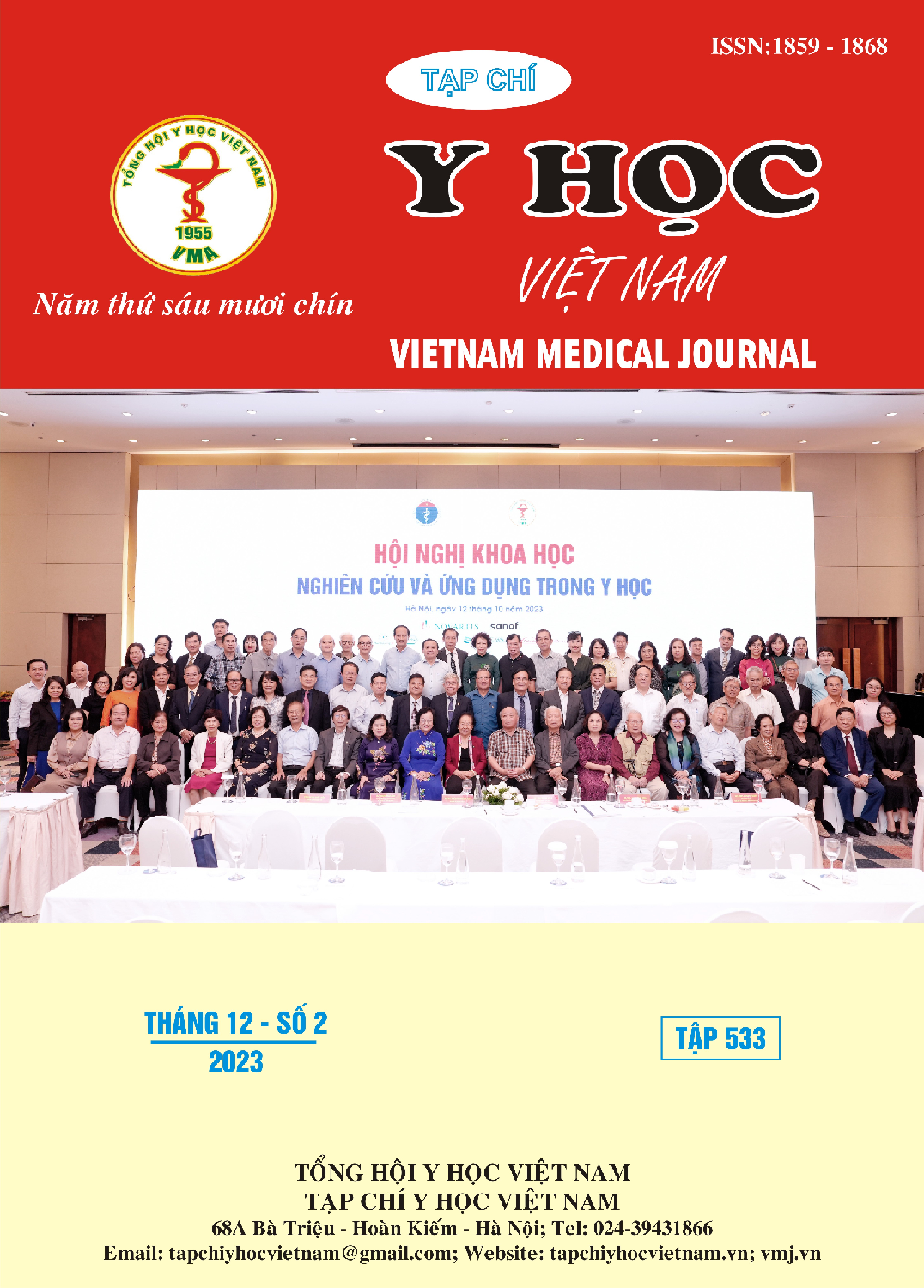SEROPOSITIVE RATE OF TOXOCARA CANIS LARVAE IN PEOPLE AT AN LOC WARD, BINH LONG DISTRICT, BINH PHUOC PROVINCE
Main Article Content
Abstract
Objective: To determine the seropositive rate of Toxocara canis larvae in people at An Loc Ward, Binh Long district, Binh Phuoc province in 2021. Research subjects and methods: The study design was a cross-sectional study. The subjects were residents 3 years old and above who had household registration and lived in An Loc ward, Binh Long district, Binh Phuoc province. Results: The seropositive rate of T. canis accounted for 18.5%, of which this rate of male and female was similar (19.3% compared to 17.9%), 3-14 years old group accounted for 24.6%, ≥15 years old group accounted for 17.4%. - There were 73.3% of study subjects with normal eosinophil index (< 5%) and 26.7% increased (≥ 5%). - There were no differences in T. canis larvae seropositive rate according to ethnicity, education level, occupation and economic class (p>0,05).
Article Details
References
2. Phan Thông (2018), Tỷ lệ huyết thanh dương tính với Toxocara spp. và một số yếu tố liên quan của người dân tại xã Quảng Hiệp, huyện Cư M’gar, tỉnh Đắk Lắk, năm 2018, Luận văn thạc sĩ y học, Trường Đại học Tây Nguyên.
3. Bùi Văn Tuấn (2018), Thực trạng, một số yếu tố liên quan nhiễm ấu trùng giun đũa chó (Toxocara canis) ở người tại huyện Mộ Đức, tỉnh Quảng Ngãi năm 2016 và hiệu quả của một số biện pháp can thiệp, Luận án tiến sĩ y học, Viện vệ sinh dịch tễ Trung ương.
4. Araújo A.C, Villela M .M, Lopes, ÂS, et al (2018), "Seroprevalence of Toxoplasma gondii and Toxocara canis in a human rural population of Southern Rio Grande do Sul", Revista do Instituto de Medicina Tropical de São Paulo, 60, e28. pp.1-7.
5. Chieffi P.P., Lescano S.A.Z., Fonseca G.R.E, et al (2021), "Human oxocariasis: 2010 to 2020 Contributions from Brazilian Researchers", Research and reports in tropical medicine, Res Rep Trop Med, May 19;12:81-91. doi: 10.2147/ RRTM.S274733.
6. Pezeshkian F, Pouryousef A.M, Omidian M, et al (2023), “Seroprevalence of Toxocariasis and Its Associated Risk Factors among Adult Population in Kavar District, Fars Province, South of Iran: A Cross-Sectional Community-Based Seroepidemiological Survey”, Interdisciplinary Perspectives on infectious diseases, Volume 2023, Article ID 2721202, 7 pages https://doi.org/ 10.1155/2023/2721202.
7. Phasuk N, and Punsawad C, (2020), "Seroprevalence of Toxocara canis infection and associated risk factors among primary schoolchildren in rural Southern Thailand", Tropical medicine and health, 48(1), pp. 1-8.
8. Said A, Khattak I, Abbas R. Z, et al (2023), “Toxocara canis seropositivity in different exposure groups in the Khyber Pakhtunkhwa province of Northwest Pakistan, Pararasitology Researsh, 122:1159 -1166. https://doi.org/ 10.1007/s00436-023-07816-4.


